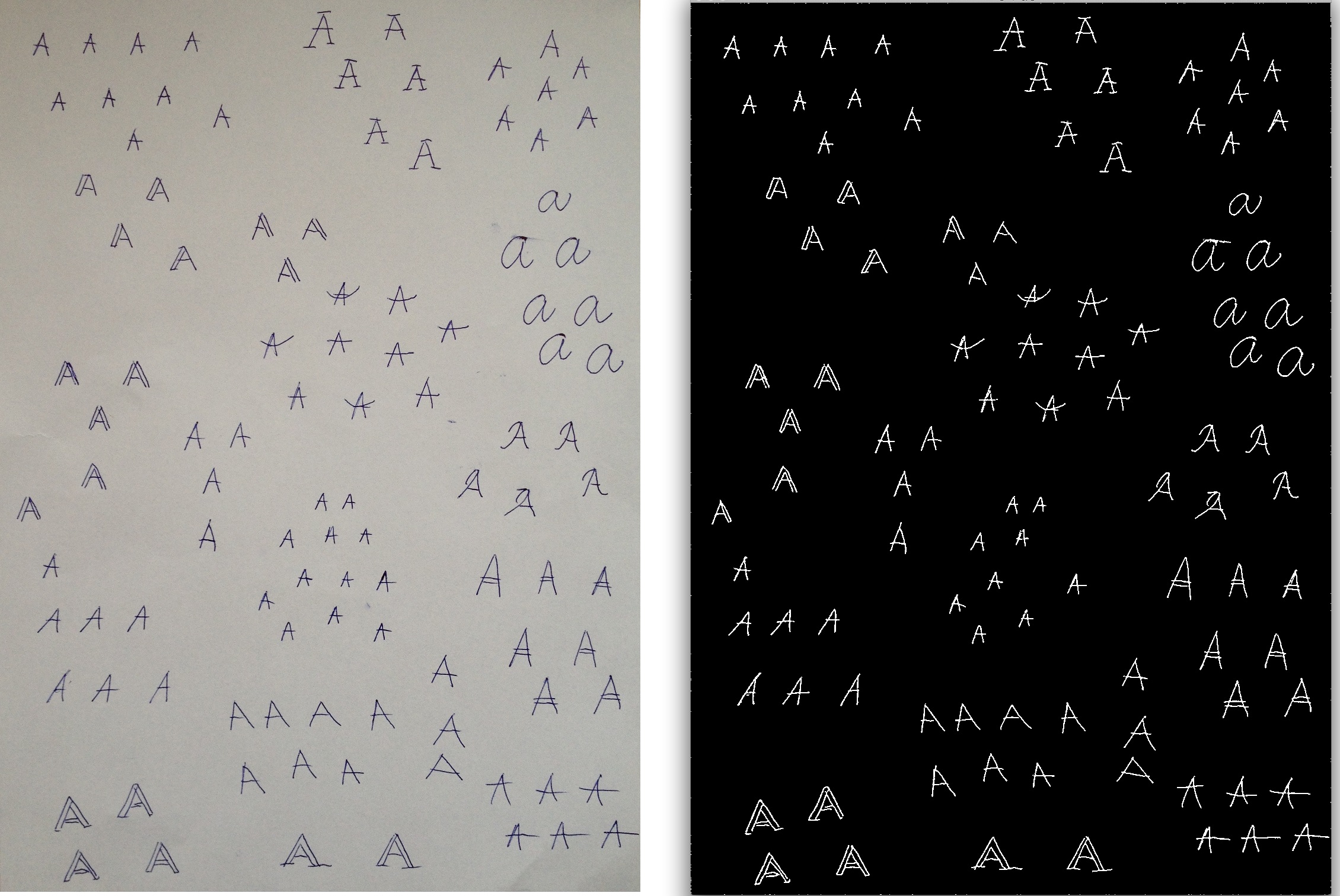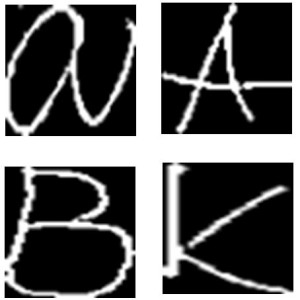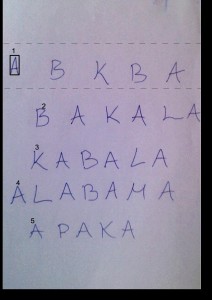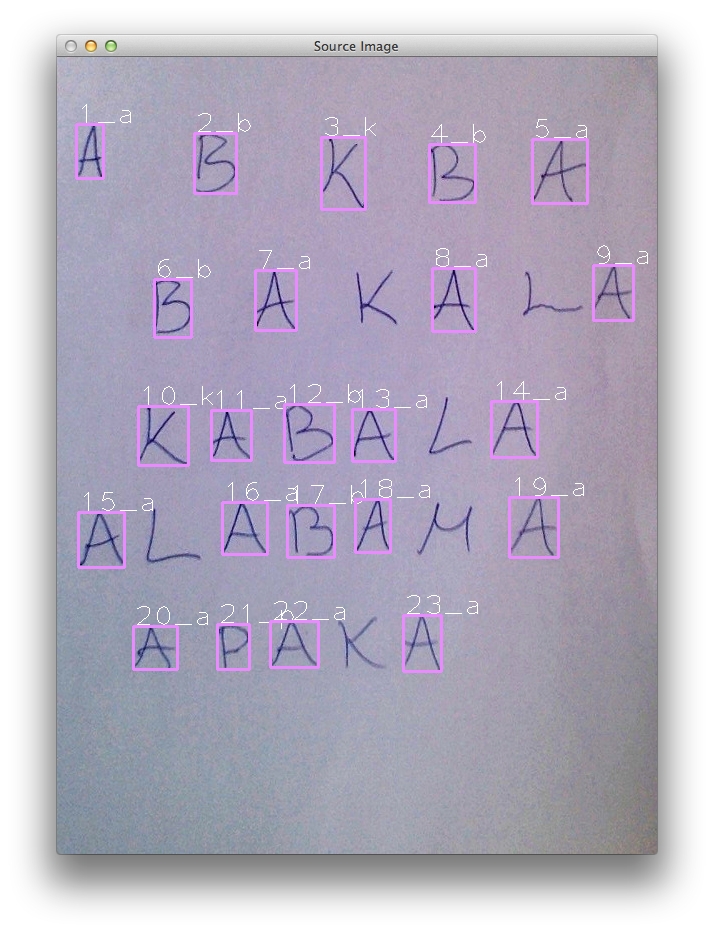
Robert Cerny
Example down below shows conversion of scanned or photographed images of typewritten text into machine-encoded/computer-readable text. Process was divided into pre-processing, learning and character recognizing. Algorithm is implemented using the OpenCV library and C++.
 The process
- Pre-processing – grey-scale, median blur, adaptive threshold, closing
cvtColor(source_image, gray_image, CV_BGR2GRAY); medianBlur(gray_image, blur_image, 3); adaptiveThreshold(blur_image, threshold, 255, 1, 1, 11, 2); Mat element = getStructuringElement(MORPH_ELLIPSE, Size(3, 3), Point(1, 1)); morphologyEx(threshold, result, MORPH_CLOSE, element);
- Learning – we need image with different written styles of same character for each character we want to recognizing. For each reference picture we use these methods: findContours, detect too small areas and remove them from picture.
vector < vector<Point> > contours; vector<Vec4i> hierarchy; findContours(result, contours, hierarchy, CV_RETR_CCOMP, CV_CHAIN_APPROX_SIMPLE); for (int i = 0; i < contours.size(); i = hierarchy[i][0]) { Rect r = boundingRect(contours[i]); double area0 = contourArea(contours[i]); if (area0 < 120) { drawContours(thr, contours, i, 0, CV_FILLED, 8, hierarchy); continue; } }Next step is to resize all contours to fixed size 50×50 and save as new png image.
resize(ROI, ROI, Size(50, 50), CV_INTER_CUBIC); imwrite(fullPath, ROI, params);
We get folder for each character with 50×50 images
- Recognizing – now we know what look like A, B, C … For recognition of each character in our picture we use steps from previous state of algorithm. We pre-process our picture find contour and get rid of small areas. Next step is to order contours that we can easily output characters in right order.
while (rectangles.size() > 0) { vector<Rect> pom; Rect min = rectangles[rectangles.size() - 1]; for (int i = rectangles.size() - 1; i >= 0; i--) { if ((rectangles[i].y < (min.y + min.height / 2)) && (rectangles[i].y >(min.y - min.height / 2))) { pom.push_back(rectangles[i]); rectangles.erase(rectangles.begin() + i); } } results.push_back(pom); }Template matching is method for match two images, where template is each of our 50×50 images from learning state and next image is ordered contour.
foreach detected in image foreach template in learned if detected == template break end end end
Results
Recognizing characters with template matching in ordered contours array where templates are our learned images of characters. Contours images have to be resize to 51×51 pixels because our templates are 50×50 pixels.
matchTemplate(ROI, tpl, result, CV_TM_SQDIFF_NORMED);
minMaxLoc(result, &minVal, &maxVal, &minLoc, &maxLoc, Mat());
if (maxVal >= 0.9) { //treshold
cout << name; // print character
found = true;
return true;
}
Currently we support only characters A, B, K. We can see that character K was recognized twice from 4 characters in image. That’s because out set of K written styles was too small (12 pictures). Recognition of characters A and B was 100 % successful (set has 120 written style pictures).
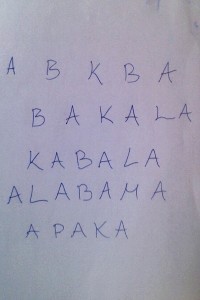

Console output: abkbabaaakabaaaabaaapaa
